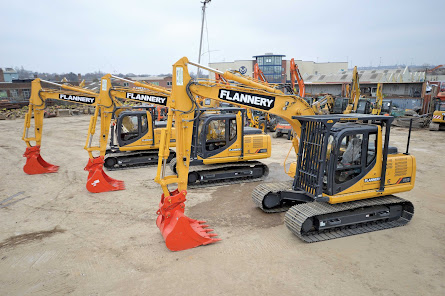When it comes to preventing your vehicle from rolling, aluminum wheel chocks are an essential component. They provide a stable and secure base that helps keep your conveyance in place, no matter what the terrain.
Wheel chocks are devices that are used to prevent wheeled vehicles from moving. They can be made from a variety of materials, but aluminum wheel chocks are a popular choice because they are lightweight and durable. Wheel chocks are placed behind the wheels of the vehicle, and they stop the vehicle from rolling forward or backward. Aluminum wheel chocks are an effective way to prevent wheeled vehicles from moving, and they are a common choice for businesses and homeowners alike.
There are some essential types and benefits of aluminum wheel chocks which I will discuss in a further dissertation are:
Types of Aluminium Wheel Chocks:
Block-Style aluminum chock: A block-style chock is the most common type of wheel chock. It is a simple piece of aluminum that is placed behind the wheel. The weight of the vehicle presses against the chock, and this prevents the vehicle from moving.
Brace-Style aluminum chock: A brace-style chock is similar to a block-style chock, but it has a second piece of aluminum that extends from the first piece. This second piece helps to stabilize the chock, and it prevents the chock from moving when the vehicle is parked on an uneven surface.
Triangle-Style aluminum chock: A triangle-style chock is a three-sided piece of aluminum that is placed behind the wheel. The weight of the vehicle presses against the sides of the chock, and this prevents the vehicle from moving.
Wedge-type aluminum chocks: A wedge-type chock is a piece of aluminum that is placed under the tire. The weight of the vehicle presses against the wedge, and this prevents the vehicle from moving.
Benefits of Aluminium Wheel Chocks:
Lightweight: Aluminum wheel chocks are very lightweight, which makes them easy to carry and store.
Durable: Aluminum is a very durable material, and it can withstand a lot of wear and tear. This makes aluminum chocks an excellent choice for those who need a reliable way to prevent their vehicles from moving.
Rust-Resistant: Aluminum does not rust, which means that aluminum chocks will not corrode over time. This makes them an ideal choice for businesses that are located in humid or salty environments.
Easy to Use: Aluminum chocks are very easy to use, and they can be placed behind the wheels of a vehicle in just a few seconds.
Affordable: Aluminum chocks are very affordable, and they are a great value for businesses that need a reliable way to prevent their vehicles from moving.
Inexpensive: Aluminum wheel chocks are an inexpensive way to prevent your vehicle from rolling. They are a fraction of the cost of other types of wheel chocks, and they will last for many years.
When should you use aluminum wheel chocks?
You should use aluminum chocks whenever you need to prevent a vehicle from rolling. This can be in a parking lot, garage, or other location. You can also use chocks on boats, RVs, and trailers to keep them in place. Chocks are also used in industrial settings to keep machinery and equipment from moving.
How do you use aluminum wheel chocks?
To use aluminum chocks, simply place them behind the wheels of the vehicle. The weight of the vehicle will press against the chocks, and this will prevent the vehicle from moving. You can also use a rope or chain to secure the chocks to the vehicle. This will help to keep them in place if the vehicle is parked on an uneven surface.
Summary
Aluminum wheel chocks are a popular choice for businesses and homeowners alike because they are lightweight, durable, and easy to use. Wheel chocks prevent vehicles from rolling, and they can be used in a variety of settings. There are several different types of aluminum chocks available, and each has its own benefits. When choosing an aluminum chock, it is important to consider the size and weight of the vehicle, as well as the environment in which it will be used.







.jpg)




